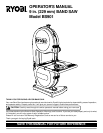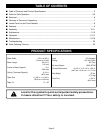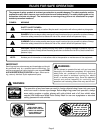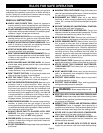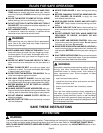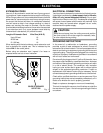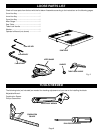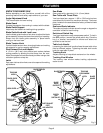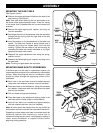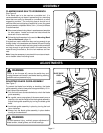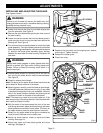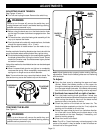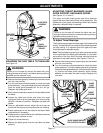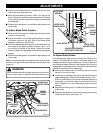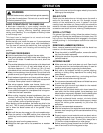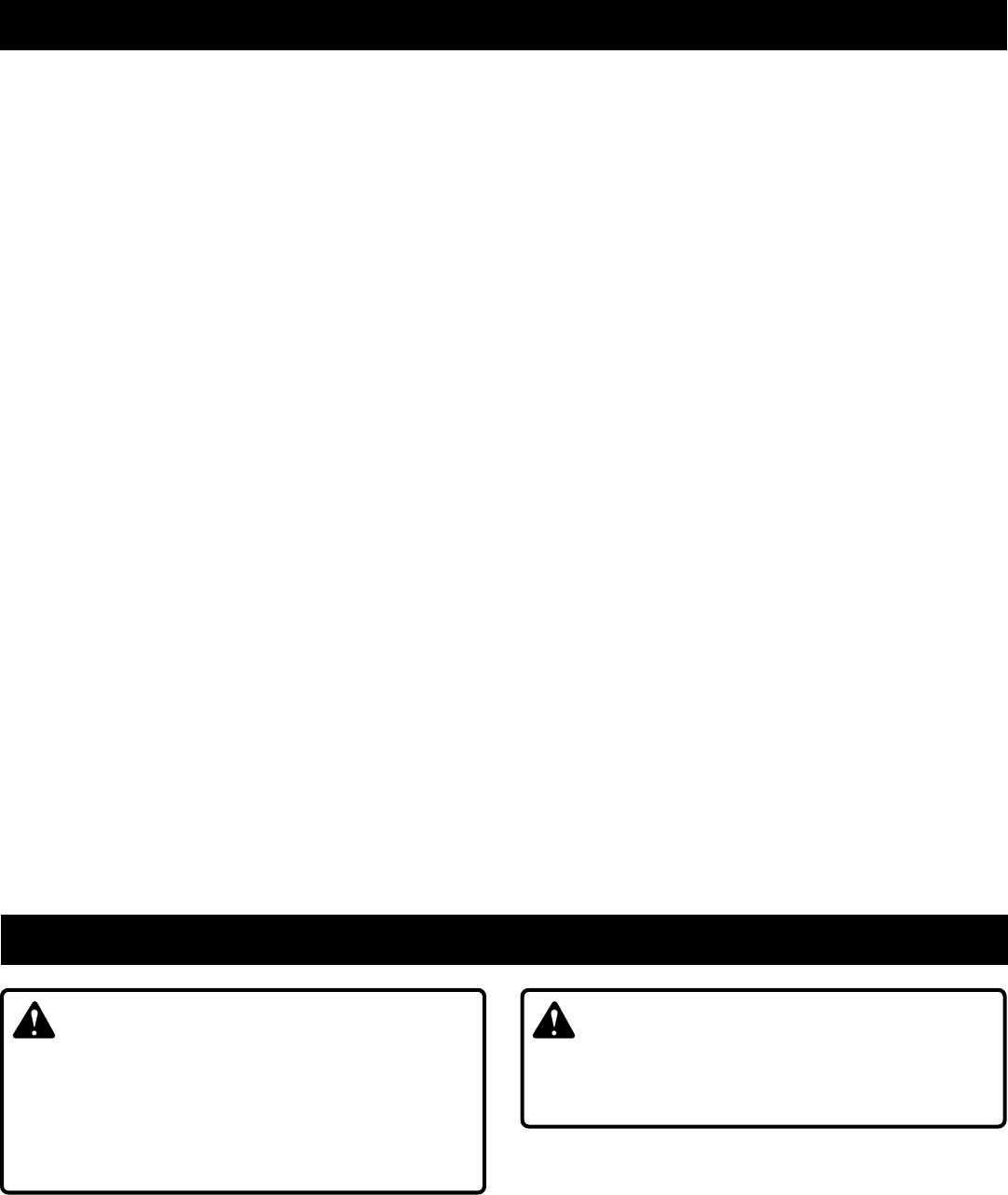
Page 7
GLOSSARY OF TERMS FOR WOODWORKING
UNPACKING
Resin
A sticky, sap-based substance that has hardened.
Ripping
A cutting operation along the length of the workpiece.
Saw Blade Path
The area directly in line — over, under, behind or in front of
the blade. As it applies to the workpiece, that area which will
be or has been cut by the blade.
Set
The distance that the tip of the saw blade tooth is bent (or set)
outward from the face of the blade.
SFPM
2,900 surface feet per minute, used in reference to surface
speed of blade.
Throw-Back
Saw throwing back a workpiece in a manner similar to a
kickback. Usually associated with a cause other than the kerf
closing, such as a workpiece being dropped into the blade or
being placed inadvertently in contact with the blade.
Through Sawing
Any cutting operation where the blade extends completely
through the thickness of the workpiece.
Workpiece
The item on which the cutting operation is being done. The
surfaces of a workpiece are commonly referred to as faces,
ends, and edges.
Worktable
The surface on which the workpiece rests while performing
a cutting or sanding operation.
WARNING:
To prevent accidental starting that could cause possible
serious personal injury, assemble all parts to your saw
before connecting it to power supply. Saw should never
be connected to power supply when you are assembling
parts, making adjustments, installing or removing blades,
or when not in use.
WARNING:
If any parts are missing, do not operate this tool until the
missing parts are replaced. Failure to do so could result
in possible serious personal injury.
■ Carefully remove all parts from the carton and place the
saw on a level work surface. Separate and check against
the list of loose parts.
■ Do not discard the packing materials until you have care-
fully inspected the saw, identified all parts, and satisfac-
torily operated your new saw.
Note: If any parts are damaged or missing, do not attempt
to plug in the power cord and turn the switch on until the
damaged or missing parts are obtained and are installed
correctly.
Bevel Cut
A cutting operation made with the saw table at any angle
other than 90° to the blade.
Compound Cut
A compound cut is a cut made using a miter angle and a
bevel angle at the same time.
Crosscut
A cutting or shaping operation made across the grain or the
width of the workpiece.
Freehand (for band saw)
Performing a cut without the workpiece properly supported
on the saw table.
Gum
A sticky, sap-based residue from wood products.
Kerf
The material removed by the blade in a through cut or the slot
produced by the blade in a non-through cut or partial cut.
Kickback
A hazard that can occur when the blade binds or stalls,
throwing the workpiece back toward operator.
Leading End
The end of the workpiece pushed into the cutting tool first.
Miter Cut
A cutting operation made with the workpiece at any angle to
the blade other than 90°.
Push Stick
A device used to feed the workpiece through the saw blade
during narrow cutting operations. It helps keep the operator's
hands well away from the blade.
Resaw
A cutting operation to reduce the thickness of the workpiece
to make thinner pieces.



